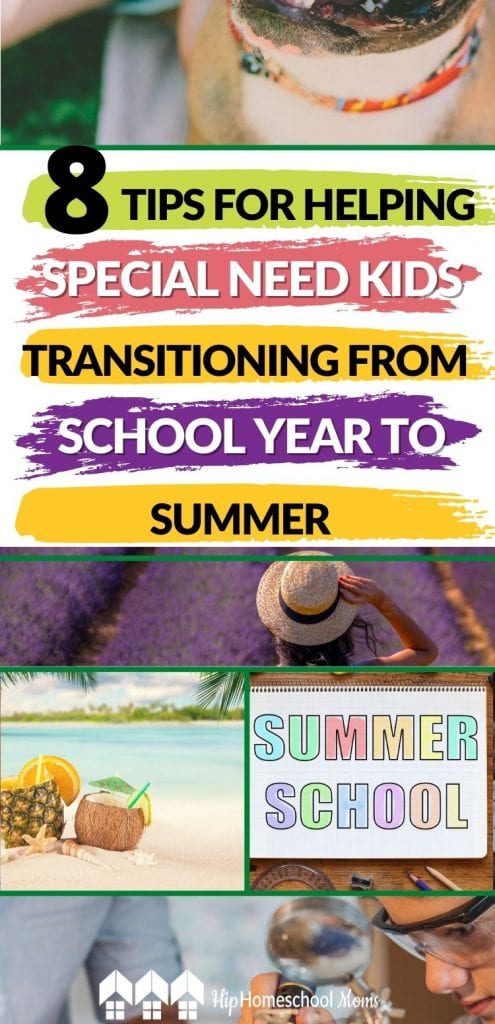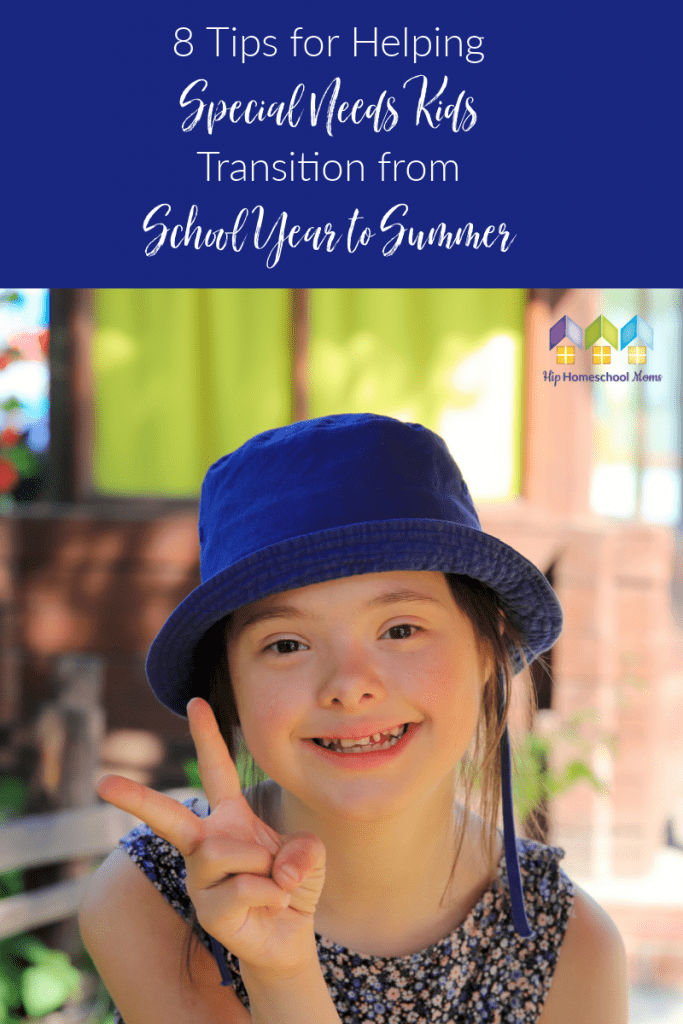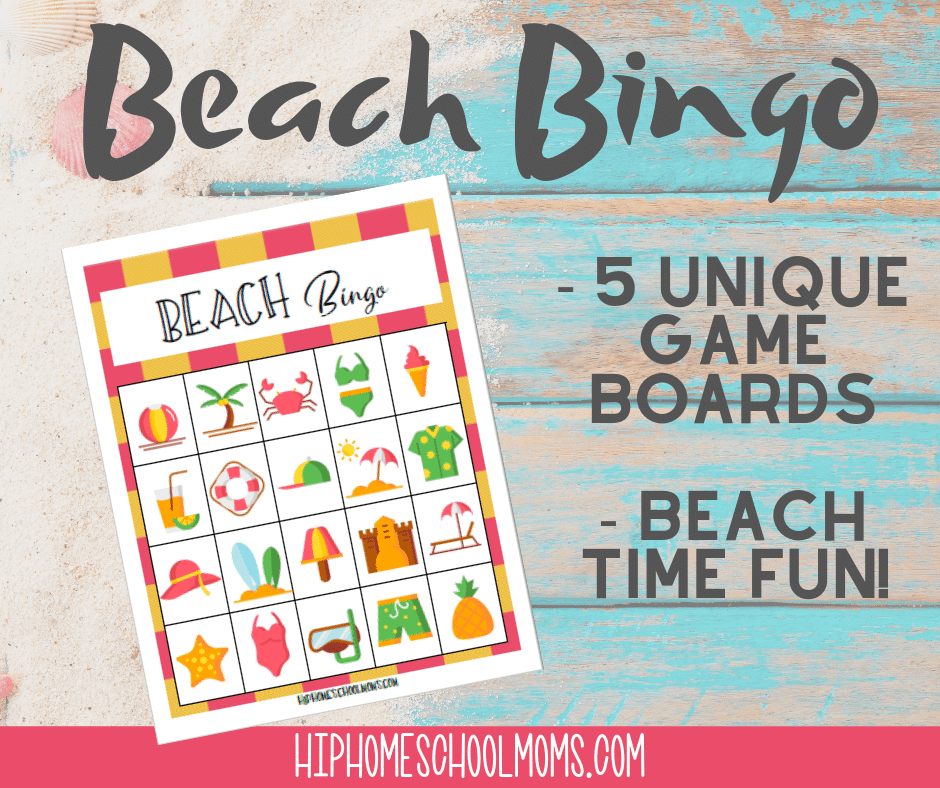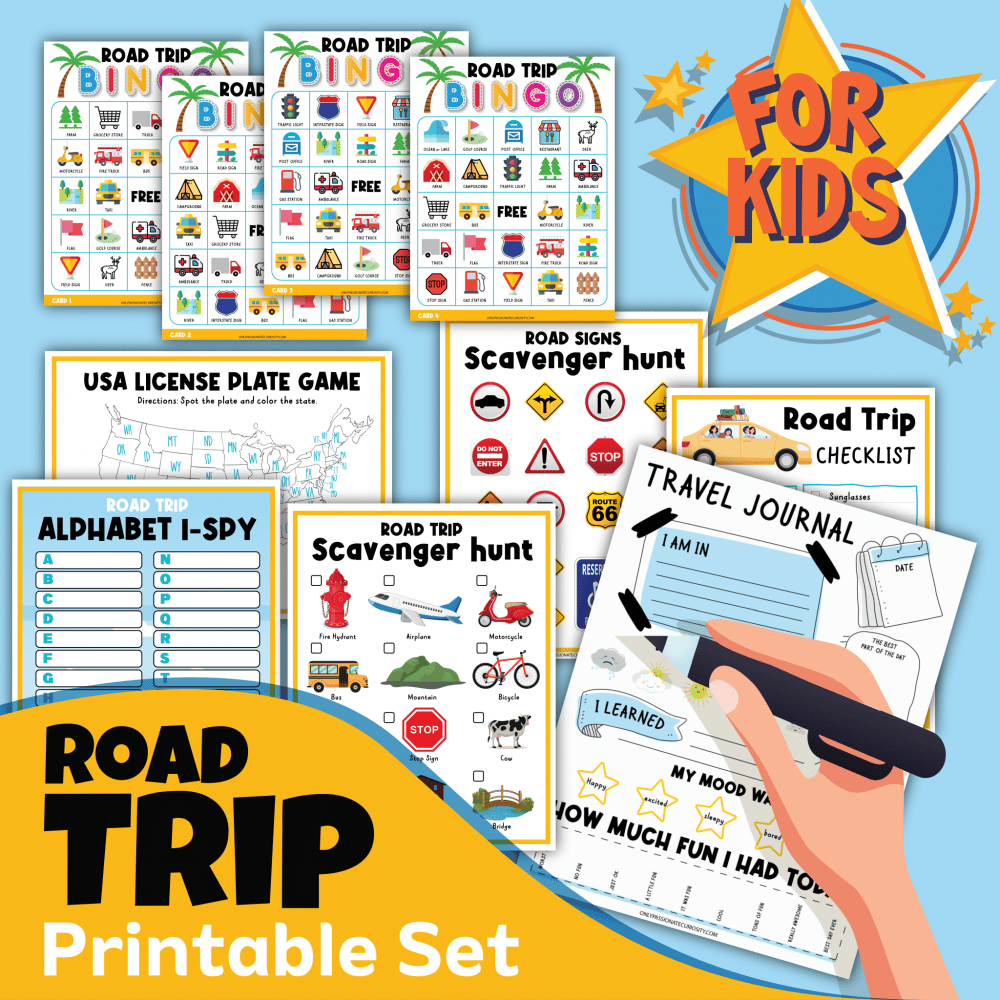8 Tips for Helping Special Needs Kids Transition to Summer
It’s the time of year when we’re thinking about helping special needs kids transition to summer. These tips may be useful for parents of other kids too!
My oldest child (now an adult) has autism. For her, transitioning from one season to another (and even from one activity to another) was often a huge source of stress and anxiety. With years of experience, I’ve learned to minimize the stress and, thankfully, she’s mellowed as she’s grown up.
It can still be stressful making transitions, though, especially with younger children.
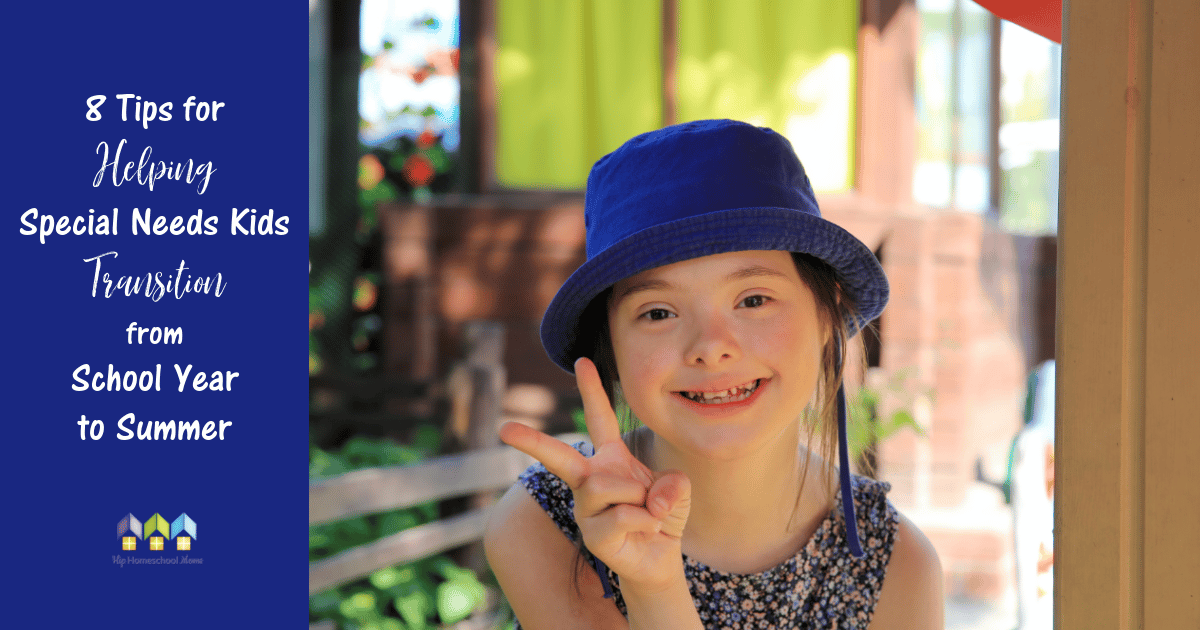
8 Tips for Helping Special Needs Kids Transition to Summer
Not only are our children (whether special needs or neuro-typical) transitioning from school year to summer, but they’re usually moving from a time of many hours of structured activities to many hours of free time–or at least much less structure.
Even if you homeschool over the summer or homeschool year-round, you still may have a lighter schedule, so your children probably still have less structure and a more open and flexible schedule.
There are ways to help minimize the stress of transitioning from the school year to summer break, though. These aren’t magical methods for removing all anxiety from the change, but they are ways to help make it easier!
1. Talk about it ahead of time.
My daughter, even as an adult, is nonverbal. That does not mean, however, that she doesn’t understand what I say to her or that I don’t make an effort to help her understand. I do my best to talk to her about things just as I would talk with my other children.
I think it’s important that we give our special needs kiddos the chance to receive information even if they don’t understand all of it. After all, they may understand more than we think! And it certainly won’t hurt to give them the chance to hear and understand, right?
For that reason, one of the easiest and best things we can do to help our kids make transitions is talk to them ahead of time. I suggest having a conversation a few weeks (or at least a few days) before making the change.
There’s no need to go in-depth or make a big deal out of it (which may actually heighten your child’s anxiety). Instead, simply mention the kinds of changes that will be happening, and do your best to stay calm.
You might want to mention that your regular school year will soon be over. Talk about some of the special things you’ll be doing over the summer and when you’ll be doing them.
Keep in mind, though, that it might be better to wait to mention anything (like a super fun summer vacation) that your child will want to do right this minute. 🙂 Sometimes our special needs kiddos don’t quite understand that the visit to the water park (or wherever else) is several weeks away. It’ll save stress on you and your child if you wait until closer to the time to mention it.
2. Let your special needs child choose some summer bucket list items to do.
If your child is able, let him or her suggest some things to add to your summer bucket list! These may or may not be educational activities, but they should all be fun activities that you can do together.
These might include things like:
- building things
- art activities
- cooking or baking
- gardening
- playing games
- or some fun summer reading! Many younger children already love reading with parents or siblings. Even teens can enjoy reading with parents or with parents and teens from another family (sort of like a summer book club)!
If your child has a hard time verbally expressing what he or she wants to do, use pictures from magazines or printed from the internet to show some choices. Then go through the pictures together.
3. Talk about how much school work you will do over the summer (if any).
Let your child know about school work, therapy schedules, etc.
For example, before my daughter graduated from our homeschool, we usually did a couple of hours of school work at least twice a week just to keep her busy and to make sure she didn’t forget important information and skills.
We also kept going to physical and occupational therapy. At the beginning of the summer, I made sure she knew which days she would be doing school work and when her PT and OT sessions would be.
4. Keep as many routines as possible.
For my daughter, it was important for me to be consistent with bedtime even over the summer–at least as often as possible. I also tried to make sure she got up each morning at a fairly consistent time. She simply felt better and behaved better with consistent bedtimes and wake-up times. (She’s 25 now, and she still goes to bed and wakes up at about the same times each day!)
Another example might be allowing your child to keep morning routines or other daily routines from the school year. During the school year, my daughter knew she had to get up, brush her teeth and wash her face, and get dressed. She knew that, once she was up and dressed, we would spend 30 minutes or so reading together before having breakfast and doing school work. Then she would be allowed to play on the computer.
During the summer, we still got up, got dressed, brushed her teeth, washed her face, and got her dressed. Then we took some time to read together.
On “summer school” days, we then did school work. On “off” days, she got to go ahead and play on the computer. This kept our routine fairly consistent and helped her adjust. (Note: I was certain to let her know as soon as she woke up whether it was a “summer school” day or an “off” day.)
5. Plan some “down days” to help keep your child from being overwhelmed.
Even if you enjoy going and doing and being busy over the summer, it’s important for many children–especially special needs children–to have some “down days.” Try to resist the urge to cram every day full of places to go and things to do! For many children (and parents!) being too busy is overwhelming and can take the fun out of fun activities and make them stressful instead.
Maybe you and your children can take a day now and then to just stay home and take a break. Maybe you can read some library books, play in the sprinkler, or even watch a movie together and just relax.
6. Create a visual calendar or visual schedule.
Many special needs children and even neuro-typical younger children love using visual calendars! These are simply calendars with pictures instead of words so that they’re easier to understand for children who can’t yet read or don’t read well.
You can print a calendar page or draw one on a poster board if you need more space. Then draw, cut out pictures, or even use photos to show activities, obligations (like doctor visits or therapy appointments), vacations, visits with friends, trips to the library or park, or whatever else you want to include!
If a month is too much information or is too overwhelming, do a week at a time instead. If a week is still too much, do a daily schedule instead! For a daily schedule, you will simply include drawings, pictures you’ve cut out, or photos to show the order of activities for the day. This way your child will still know what to expect, but he or she won’t be overwhelmed by a huge amount of information.
If your child needs to know farther ahead of time what to expect the next day, just go over the next day’s schedule each night before bed or whenever works best for your family.
7. Try to get together with friends–especially a close friend or two–now and then over the summer.
If you’re part of a co-op or club that won’t be meeting over the summer, try to plan times for your child to get together with a close friend or two from the co-op or club over the summer. Your child may not understand why the co-op or club isn’t meeting for a while, and knowing they’ll still get together sometimes may help lessen the anxiety of thinking about not having these regular meetings.
Be sure your child understands that co-ops and clubs don’t usually meet over the summer because many families go on vacations or do other things that cause them to be away from home sometimes over the summer but that, once summer break is over, things will get back to a familiar routine.
8. Create (or let your child help create) a back-to-school countdown chart or calendar.
You might choose something easy like a calendar on which you mark off the days. Or you could do something fun like popsicle sticks in a jar. (Start with one stick for each day of summer break and remove one stick each day.)
Maybe you could make a paper chain with one link for each day of summer and simply cut off one link each day. If the countdown is something your child can participate in, it will be more fun and meaningful.
While making the transition from the school year to summer may still be a bit difficult for your special needs child, I’ve found these ideas to be very helpful for my family. Some of the ideas take a small amount of preparation, but all of them can be done easily and without spending a lot of money. And your children can help with most of these ideas, which helps make the transition more real and more fun!
Do you have suggestions for helping special needs kids transition to summer? Or for helping other kids transition to summer? If so, please share your ideas in the comments!
You May Also Like:



